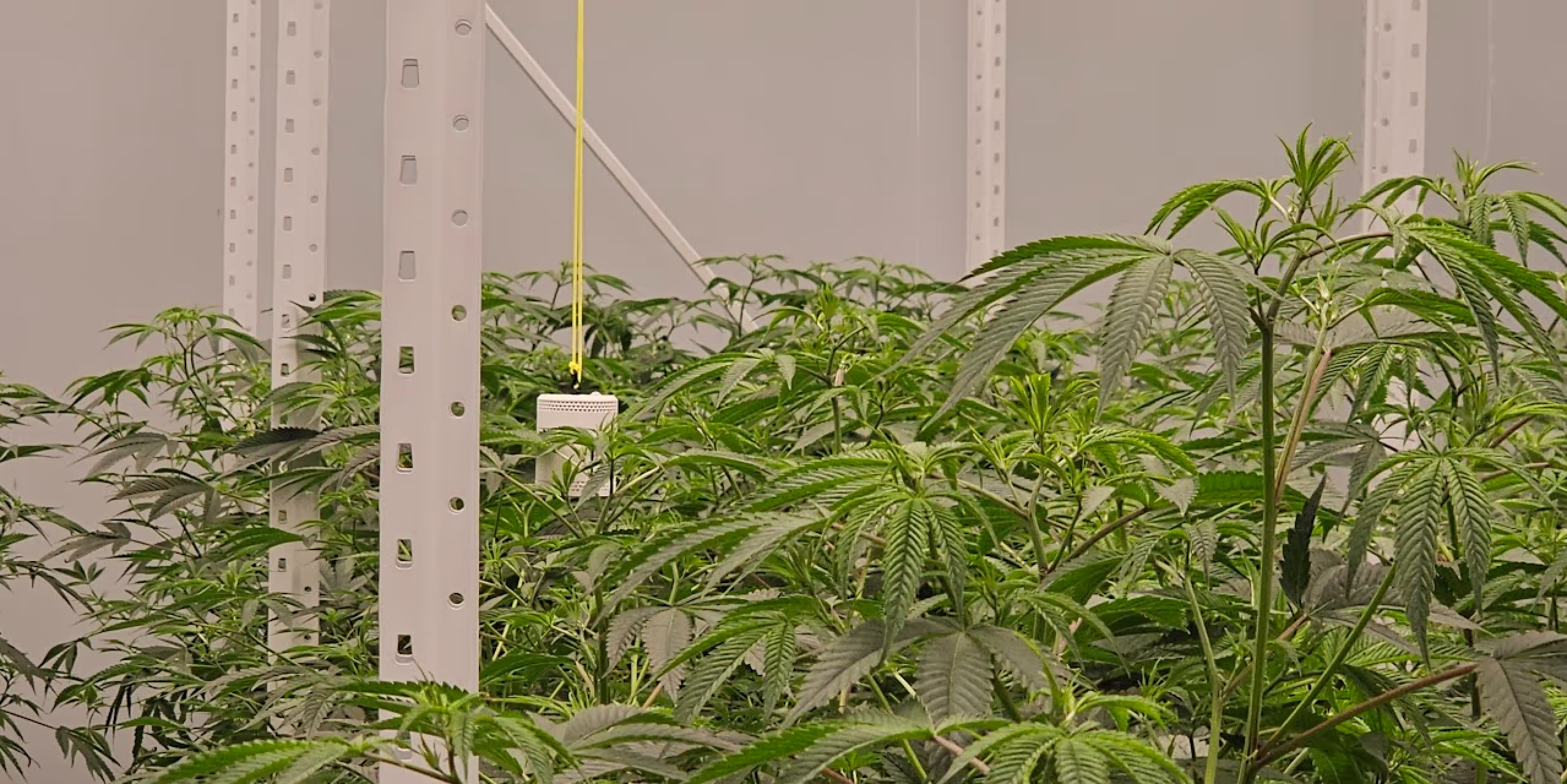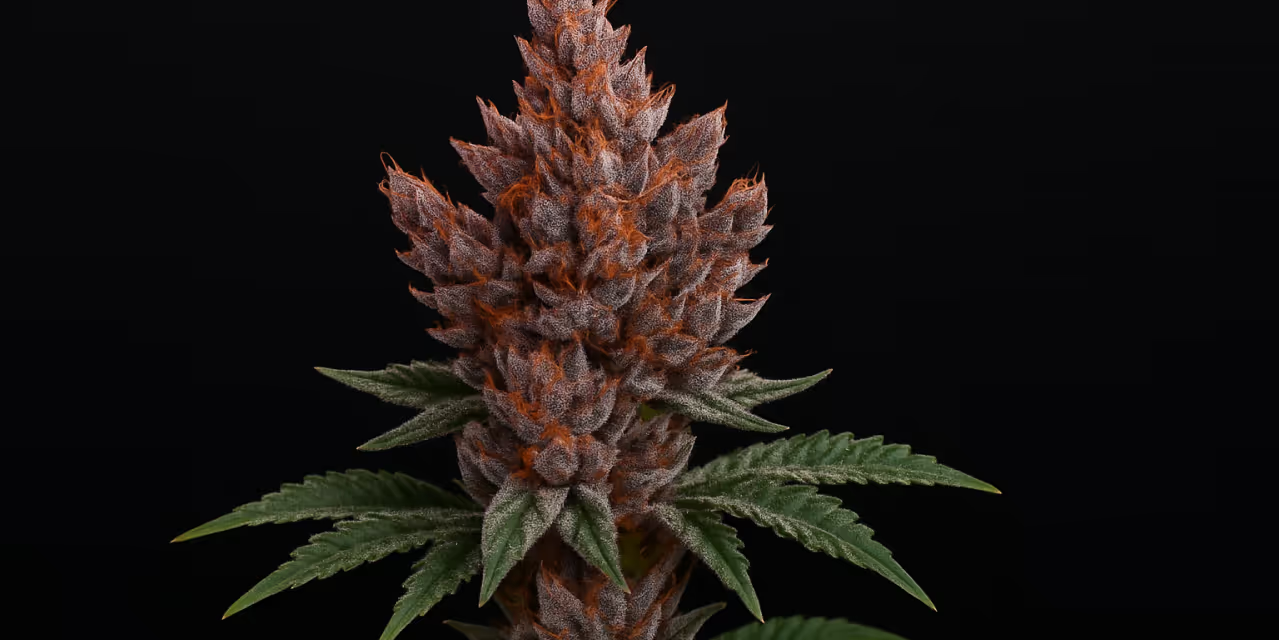Male cannabis plants: Identification, uses and benefits


Most cannabis growers are interested in only growing female cannabis plants and dread spotting a male plant in their grow, fearing it could jeopardise their harvest. And that makes total sense.
There’s also a lot of information out there about how male cannabis plants can be a valuable asset if you can just think out of the box - this is a super interesting topic but often not so relevant to smaller-scale growers.
This post will guide you through identifying male cannabis plants, misconceptions and common FAQs.
For completeness, we’ll also cover leveraging the additional potential uses of male cannabis plants on a larger scale.
Disclaimer: Any information given on this site is for educational purposes only. Please ensure if you’re growing cannabis, you’re doing so in accordance with the law and subject to appropriate permissions and licenses of the applicable country.
Understanding male cannabis plants
Male cannabis plants are often considered mere nuisances in the production of high-THC buds but actually play a vital role in the cannabis lifecycle.
Cannabis is classified as a dioecious plant, meaning it naturally grows as separate male and female plants.
This botanical trait is particularly significant in cannabis cultivation as it allows breeders and growers to manipulate plant sex for various purposes.
Male cannabis plants produce pollen sacks and pollinate nearby female cannabis plants, therefore playing a key role in seed production.
When cultivating cannabis, distinguishing between male and female plants is crucial.
Characteristics of male cannabis plants
A male cannabis plant can be identified by its distinct physical features.
Unlike female cannabis plants, which develop bushy leaves and sticky buds, males produce small pollen sacs around the nodes where the leaves meet the stem. These sacs eventually open to release pollen.
Recognising early signs, such as the appearance of taller stalks and fewer leaves, can help you make informed decisions about managing your plants.
The importance of male cannabis plants in cultivation
Many growers aim to cultivate seedless cannabis flowers, known as sinsemilla, by preventing a male from pollinating a female plant. However, males are indispensable for breeding programs.
They contribute genetic material that can be used to develop new strains or enhance existing ones.
The genetic diversity introduced by males can lead to more resilient plant populations better equipped to resist pests and diseases.
This knowledge is important if you’re looking to explore the full spectrum of cannabis cultivation.
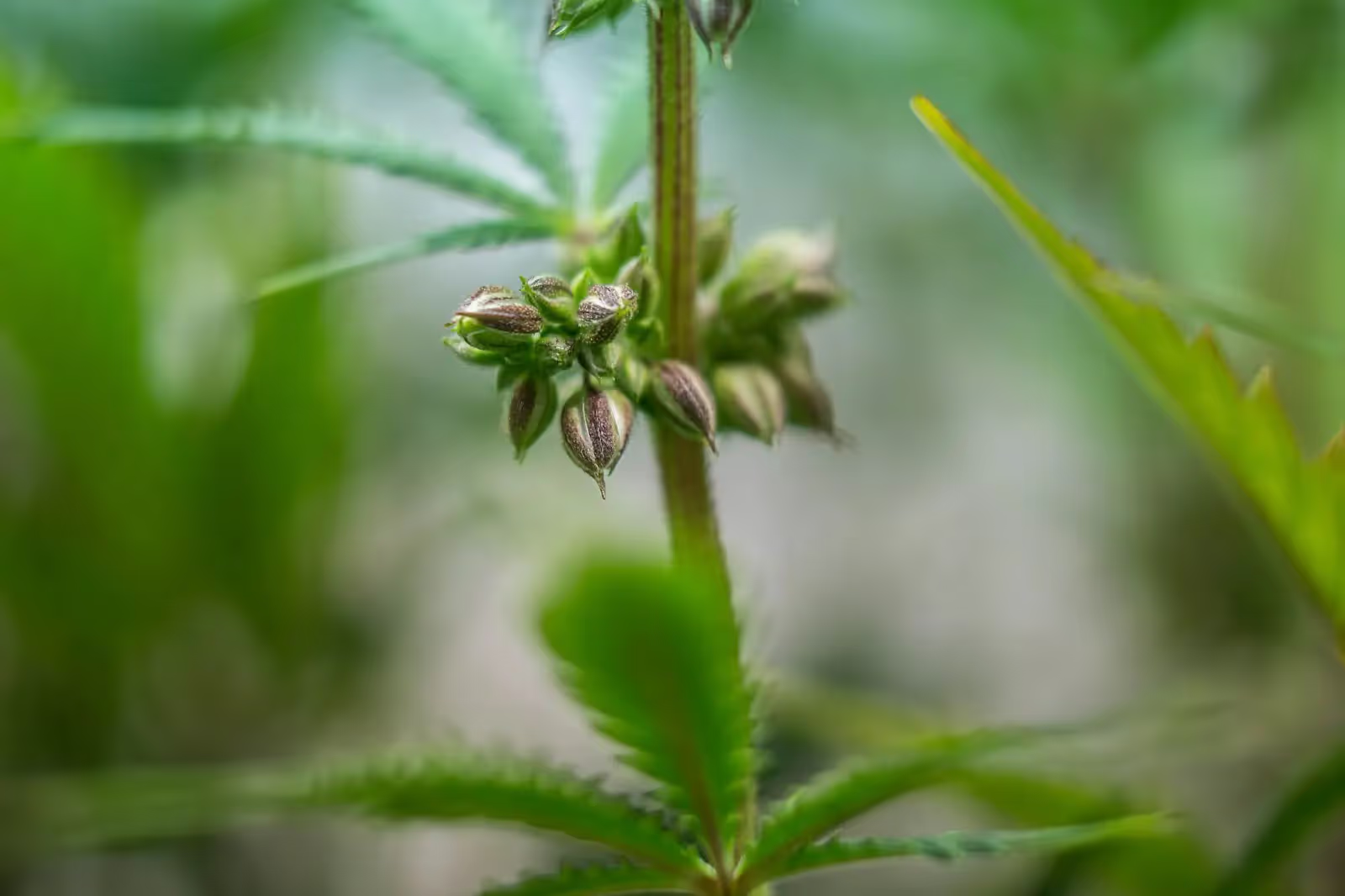
Early signs of a male cannabis plant
Being able to identify male cannabis plants early in their growth cycle is critical whether you aim to produce sinsemilla or are simply interested in managing your plants’ genetic traits.
Knowing the early signs of male plants can save you both time and resources, allowing for strategic decisions that enhance your harvest's overall quality and yield.

Early signs of a male plant
The first signs of a male cannabis plant usually appear during the vegetative stage before transitioning into the flowering phase.
Pre-flowers:
These small structures form at the nodes (where the stem and leaf intersect) and can appear as early as 3 to 4 weeks into the growing cycle.
Male pre-flowers are typically small, round balls that will eventually develop into pollen sacs.
Female pre-flowers, distinct from their male equivalents, are early indicators of a plant's sex.
Recognising female pre-flowers and female characteristics helps you to identify and remove male plants early in your cultivation process, preventing the spread of pollen and ensuring the cultivation of only female plants.
Growth patterns
Male plants often have thicker stalks and grow taller and faster than their female counterparts as they mature.
This rapid vertical growth is an adaptation for pollen dispersal, allowing them to spread their pollen to female flowers effectively.
Males generally start flowering sooner than females. This early onset of flowering allows males to be ready to release their pollen as soon as the females start developing their receptive flowers.
How to tell the difference between male and female plants
Besides the early signs, several more definitive features become evident to help you differentiate between male and female plants as they mature:
Pollen sacs vs pistils
The most straightforward way to distinguish male from female cannabis plants is by examining their flowers.
As plants enter the flowering stage, male plants develop visible pollen sacs, while female plants produce pistils, which appear as white hairs designed to catch pollen.
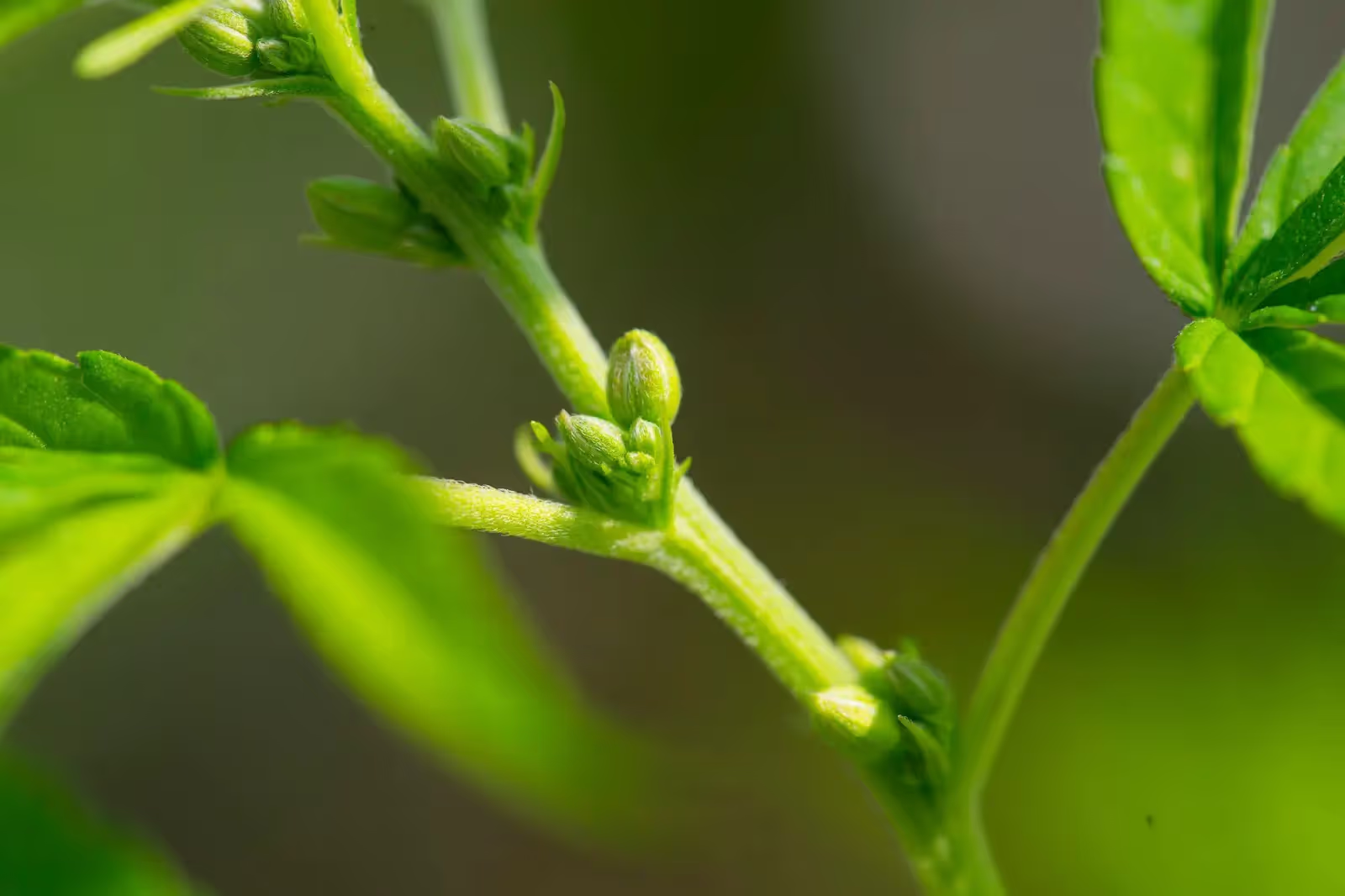
Male cannabis flowers: Male plants develop pollen sacs that are typically found clustered together.

Female flowers: A female cannabis plant produces pistils and calyxes that form the structure of the female buds. Pistils are hair-like structures that are usually white or orange.
Stem structure
A male plant generally has a thicker, sturdier stalk than a female plant. This is because the stalks need to support the weight of the male pollen sacs as they mature.
The presence of nearby female cannabis plants poses a risk of pollination by male counterparts. Understanding these signs minimises the risk of accidental pollination, which is crucial for growers focusing on high-quality, seed-free buds.
Prompt identification and management of male plants ensure that the crop's energy is directed towards producing robust, resinous female flowers.

Making use of male cannabis plants
Although often overlooked in favour of their female counterparts, male cannabis plants offer a variety of uses and benefits that can significantly enhance commercial cannabis cultivation.
Breeding for gene pool diversity and quality
Male cannabis plants play a crucial role in breeding, providing pollen that contributes to the genetic makeup of future generations.
Breeding males ensures a broader genetic pool, which is vital for the vitality, adaptability, and longevity of cannabis strains.
The female mother plant is the source of genetic material for breeding new strains.
However, by selecting a good male plant with desirable traits, you can create seeds with enhanced characteristics, such as strong growth patterns and potent cannabinoid profiles.
This diversity helps plants cope with changing environmental conditions through traits such as disease resistance and altered fatty acid content. So male plants can contribute to the creation of pest or disease-resistant breeding strains.
Cannabinoid-rich extracts
Although male plants contain lower levels of cannabinoids, they can still be processed to produce cannabinoid-rich extracts. In fact, male leaves usually have a higher concentration of cannabinoids than their flowers. Male plants can also be a source of fatty acids and terpenes.
They can be used to produce extracts for medicinal and therapeutic products such as dietary supplements and skin care products, maximising the use of available plant materials.
Environmental contributions
Using male plant material as mulch helps maintain soil structure and fertility, returning essential nutrients to the earth and promoting a healthier growing environment.
When planted among other plants in a separate different type of garden, a male plant's aroma can reduce the likelihood of pest attacks. Companion planting reduces the need for chemical interventions.
Fibre production
Although hemp and cannabis aren’t one and the same, fibre production is worth mentioning. Male hemp plants produce softer, finer fibres than female plants, making them ideal for creating eco-friendly, high-quality textiles and paper products.
Using the entire plant reduces waste and increases the sustainability of cultivation practices.
Enhance your gardening skills – subscribe to the Grow The Best newsletter today!

Common misconceptions about male cannabis plants
Male cannabis plants often suffer from a bad reputation, primarily because they are not the direct source of consumable cannabis flowers.
However, clearing up common misconceptions can help growers and enthusiasts understand their true value and potential within the cannabis ecosystem. Here are some frequently perpetuated myths debunked:
Misconception 1: Male plants are useless
Truth: While male plants do not produce consumable buds, they are essential for breeding purposes.
Their genetic contributions can improve and diversify strains, ensuring healthier and more resilient plant populations.
Misconception 2: Male plants always negatively affect crop yields
Truth: A male plant doesn’t have to be detrimental to your crop yield if managed properly. In controlled breeding environments, males are invaluable for pollinating female plants to produce seeds for future growth.
Misconception 3: Removing male plants is always necessary
Truth: While removal is common in THC-focused cultivation to prevent pollination, male plants can be separated and used for other purposes, such as breeding and extract creation.
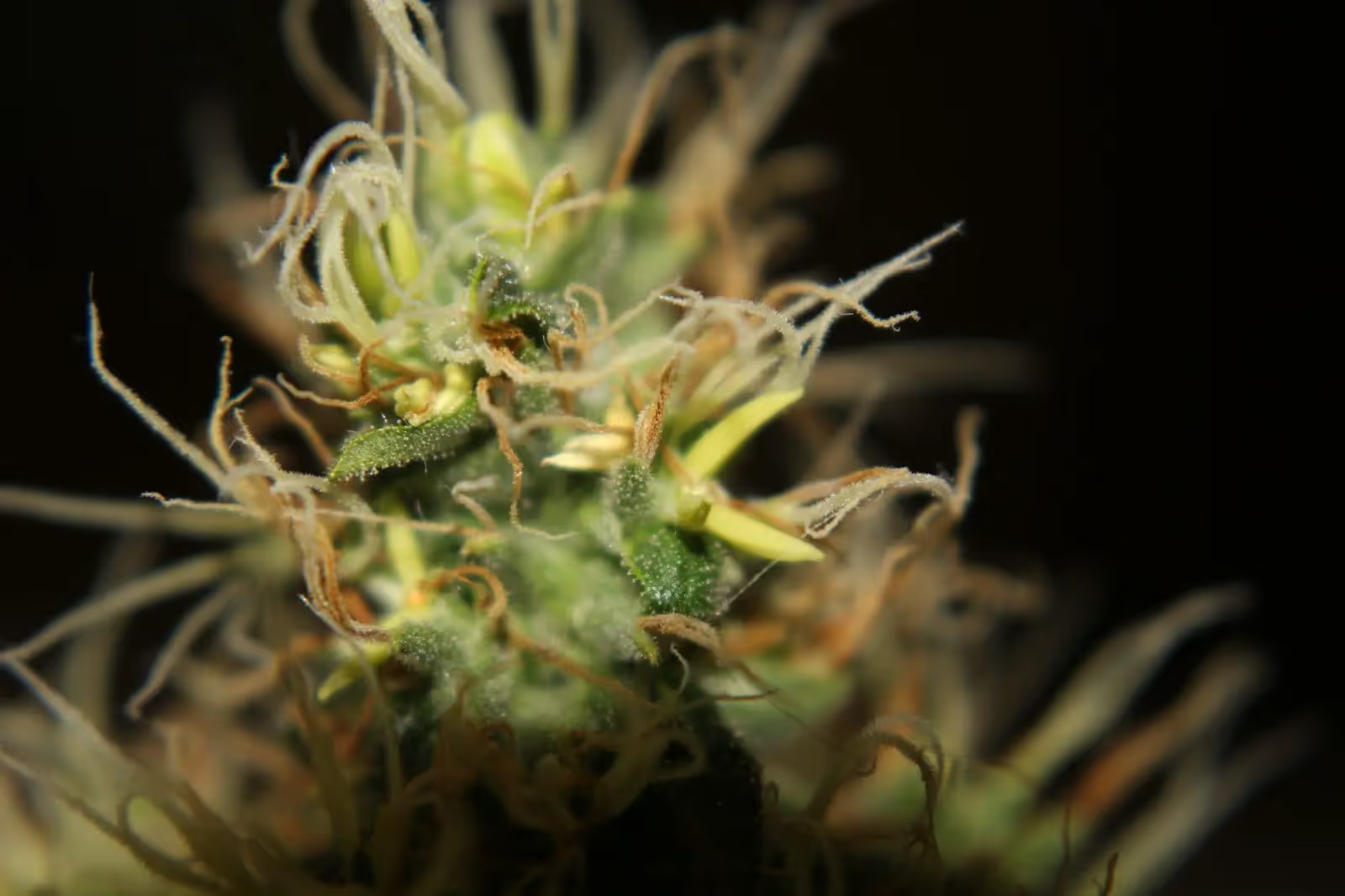
Hermaphroditic plants
While male and female cannabis plants are common in cultivation, hermaphrodite plants, or 'hermies', play a unique role in cannabis reproduction and cultivation challenges.
Hermaphroditic cannabis plants possess both male and female reproductive organs. This allows them to self-pollinate or pollinate other nearby plants, leading to seed production even in what might otherwise be a controlled, seedless (sinsemilla) growing environment.
Causes of hermaphroditism
Hermaphroditism in cannabis can be triggered by several factors:
- Genetic predisposition: Some strains are more prone to hermaphroditism than others.
- Environmental stress: Conditions such as inconsistent lighting or extreme temperatures due to poor environmental control or even physical damage can stress a plant enough to cause it to develop both male and female flowers.
- Chemical triggers: Exposure to certain chemicals or hormonal treatments can also lead to the development of hermaphroditic traits
Identifying hermaphrodite plants
Identifying hermaphroditic traits early is crucial for cannabis growers aiming to produce high-quality, seed-free buds.
Hermies plants typically develop both pollen sacs and pistillate flowers (buds). These can appear separately in different plant parts or closely clustered together.
Early detection and removal of hermies plants help prevent unwanted pollination.
Implications for growers
For cannabis growers, hermaphroditic plants can be both a challenge and a resource:
- Risk of pollination: Hermaphrodites can unintentionally pollinate female plants, resulting in seeded crops which are generally less desirable in the cannabis market.
- Genetic conservation: In some rare cases, hermaphrodite traits might be valuable for breeding programs to develop new strains or strengthen existing ones, especially in environments where male plants are unavailable.
Management strategies for hermaphroditic plants
Managing hermaphroditic plants involves careful monitoring of growing conditions and genetic selection:
Stress reduction
Minimising environmental stressors by maintaining optimal growing conditions reduces the likelihood of plants turning hermaphroditic.
Regular inspections
Frequent checks during the flowering stage allow growers to identify and isolate hermaphrodite plants early.
Genetic selection
Choosing strains known for their stability and resistance to hermaphroditism is another proactive measure.
While hermaphroditic cannabis plants are generally viewed as undesirable in the cultivation of high-quality cannabis, understanding their characteristics and managing their presence effectively is essential.
FAQs
Can you tell if a cannabis seed is male or female?
It is not possible to tell if a cannabis seed is male or female just by examining the seed itself.
Cannabis seeds do not show any external characteristics that can definitively indicate their sex. Both male and female cannabis plants come from the same seeds, and their sex is determined by genetics and influenced by environmental factors.
The only sure way to determine the sex of a cannabis plant is to grow the seed and observe its flowering phase. Male plants typically show their sex earlier in the growth cycle by developing pollen sacs, while female plants develop pistils or pre-flowers that eventually form buds.
Some growers use feminised seeds to ensure that the plants will be female. These seeds are specially treated using methods that inhibit male chromosome expression, thus increasing the likelihood of growing female plants.
However, with regular seeds, there is generally a 50/50 chance of a seed growing into a male or female plant.
When can you tell if a cannabis plant is male?
You can typically determine if a cannabis plant is male during the pre-flowering stage, which usually begins about 3-6 weeks after the seedlings emerge, depending on the growing conditions and the strain.
Male plants often show signs of their sex slightly earlier than females, which is crucial for growers who need to decide to separate or remove them to prevent unwanted pollination.
How can you identify male cannabis plants during the vegetative stage?
Identifying male cannabis plants during the vegetative stage can be challenging, as distinct male characteristics typically become visible only at the onset of the flowering stage.
However, male cannabis plants often develop thicker stalks and grow taller faster than their female counterparts.
Observing the pre-flowers at the nodes, which may start to form as early as the vegetative stage, can give early indications.
What should I do if I find a male plant in my grow?
Consider your cultivation goals. If producing seedless cannabis, you may choose to remove and isolate the male. If interested in breeding or other uses, you can keep the male to pollinate specific females or use its plant material beneficially.
Are all seeds on a male cannabis plant male?
Actually, male cannabis plants do not produce seeds. Seeds are formed on a female cannabis plant when it is pollinated by a male.
The seeds produced by this pollination process will contain genetic material from both male and female plants. These seeds can grow into either male or female plants; there is no predetermined sex for each seed.
It's a common misconception that seeds from a male plant will also be male, but in reality, the sex of cannabis plants is determined by the genetics they inherit from both parents, and environmental factors can influence the expression of these genes.
Each seed has about a 50/50 chance of being male or female, regardless of the male influence during pollination.
Can you turn a male plant female?
No, you cannot turn a male cannabis plant into a female plant.
The sex of a cannabis plant is determined genetically when the seed is formed and is largely influenced by its chromosome composition. Male plants generally have XY chromosomes, while female plants have XX chromosomes.
However, cannabis plants can exhibit both male and female characteristics under certain environmental stresses or genetic conditions, a phenomenon known as hermaphroditism.
For example, a female plant might develop male flowers if exposed to extreme stress, such as light cycle interruptions, but this does not mean the plant has changed its genetic sex from female to male. It's simply exhibiting both sexual characteristics.
Do male cannabis plants have THC?
Yes, male cannabis plants do contain THC (tetrahydrocannabinol), but at much lower levels compared to female plants. THC is the primary psychoactive compound in cannabis that produces the "high" associated with the plant.
When cultivating cannabis, most growers prefer to grow female plants because they’re valued for their high THC concentration, particularly in the flowers or buds.
Male plants, however, have significantly lower THC content, and it is mostly found in smaller amounts throughout the plant, including the leaves and stems.
While not typically used for recreational purposes due to their low potency, male plants can still be used for other applications, such as making cannabinoid-rich extracts, albeit less efficiently than female plants.
Can male plants produce cannabinoids?
Yes, male plants produce cannabinoids, though in lower quantities than females. They can still be used for extracts and other products requiring cannabinoid content.
How long do male cannabis plants take to flower?
Male cannabis plants generally show signs of flowering a bit earlier than female plants. The exact timing can vary depending on several factors, including the strain of cannabis, the growing conditions, and the light cycle (for indoor plants).
Typically, male cannabis plants begin to flower around the 3rd to 4th week of their flowering cycle under standard conditions. This is when they start developing their distinctive pollen sacs.
These sacs will usually open, and pollen begins to get released around the 5th to 6th week of their flowering cycle. This early flowering helps ensure that the male plants are ready to pollinate the female plants as soon as they start developing receptive flowers.
The total time from the start of flowering until the pollen is released and the plant completes its lifecycle can vary but generally takes about 6 to 8 weeks under optimal conditions.
This quick flowering cycle is part of the reason growers need to identify and manage male plants early in mixed-sex gardens, particularly if they wish to avoid pollinating female plants.
What are the benefits of using feminised seeds?
Using feminised seeds is highly beneficial for most growers because these seeds are bred to produce only female plants desired for their cannabinoid-rich buds.
Feminised seeds reduce the labour and uncertainty of identifying and removing male cannabis plants during the flowering stage.
Takeaways
Male plants are underused, but for most small-scale growers, practically speaking, that’s just the way it is.
We’ve explored the various roles that larger-scale cultivation of male cannabis plants can play, from essential contributions to genetic diversity in breeding programs to their practical uses in fibre production and cannabinoid extraction.
Rather than viewing them solely as a threat to crop yield, there’s definitely scope for commercial growers to see them as a valuable resource that can open up new avenues for innovation and efficiency in cannabis cultivation.
Happy growing!
Get expert growing advice – sign up for the Grow The Best newsletter now!









.avif)


